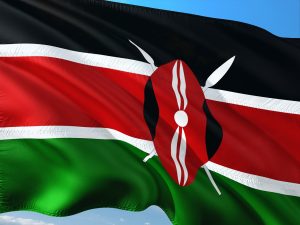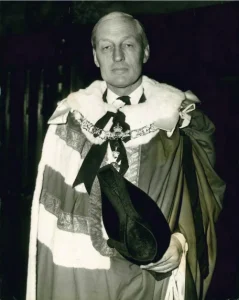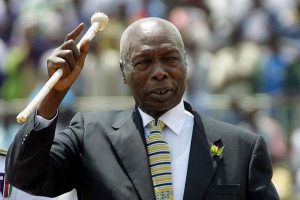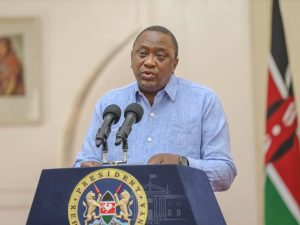Who declared the state of emergency in Kenya? Well,The state of emergency in Kenya has been declared by Sir Evelyn Baring during the 1952 Mau Mau Uprising, President Daniel arap Moi following a 1982 coup attempt, President Uhuru Kenyatta in March 2020 due to the COVID-19 pandemic, and President Mwai Kibaki in January 2008 amid post-election violence.
These declarations have been pivotal in shaping the country’s political and social landscape.
The most notable instances include the 1952-1959 Mau Mau Uprising and the 1982 coup attempt.
Each period of emergency was declared in response to significant threats to national security and order, often leading to profound and lasting impacts on the nation.
Who Declared The State Of Emergency In Kenya?Find Top 4
Kenya has experienced several states of emergency throughout its history, each declared in response to significant threats to security and order. The most notable instances include:
1. 1952-195 State Of Emergency (9 Mau Mau Uprising)
Background:
The Mau Mau Uprising was a pivotal moment in Kenya’s struggle for independence from British colonial rule. The rebellion was primarily driven by the Kikuyu ethnic group, who were fighting against the loss of their land, economic disparity, and social injustices imposed by the British colonial government.
Declaration: state of emergency was declared on October 20, 1952, by Sir Evelyn Baring

The state of emergency was declared on October 20, 1952, by Sir Evelyn Baring, then Governor of Kenya. The declaration came as a response to the escalating violence and guerrilla warfare tactics employed by the Mau Mau fighters.
Impact:
The declaration led to a brutal crackdown on the Mau Mau and their supporters. Thousands of suspected Mau Mau members were detained, and many were subjected to harsh interrogation and torture.
The emergency lasted until January 12, 1960, significantly impacting Kenya’s social and political landscape. Despite the suppression, the Mau Mau Uprising ultimately intensified the push for Kenyan independence, achieved in 1963.
2. 1982 State Of Emergency Coup Attempt
Background:
The 1982 coup attempt was orchestrated by a faction of the Kenya Air Force in an effort to overthrow the government of President Daniel arap Moi. The coup was primarily driven by dissatisfaction within the military and accusations of government corruption and authoritarianism.

Declaration: August 1, 1982, President Daniel arap Moi declared a state of emergency In Kenya
Following the attempted coup on August 1, 1982, President Daniel arap Moi declared a state of emergency to restore order and suppress the insurrection. The declaration granted the government sweeping powers to detain suspects and curb dissent.
Impact:
The coup was quickly quashed, but the state of emergency had significant repercussions. It led to widespread arrests and purges within the military, the suppression of political opposition, and increased repression of civil liberties. The event solidified Moi’s grip on power, leading to a more autocratic regime characterized by political repression and human rights abuses.
Other Instances When State Of Emergency Was Declared In Kenya
While the 1952-1959 Mau Mau Uprising and the 1982 Coup Attempt are the most notable, there have been other instances where states of emergency were declared in response to various threats:
3. 2008 Post-Election Violence:
Declaration: December 2007, President Mwai Kibaki declared a state of emergency In Kenya

After the disputed presidential election results in December 2007, widespread violence erupted across Kenya. President Mwai Kibaki declared a state of emergency to address the violence and restore order. The period was marked by intense ethnic clashes, resulting in significant loss of life and displacement.
4. 2019 State Of Emergency Due To COVID-19 Pandemic:
Declaration: In March 2020, President Uhuru Kenyatta declared a state of emergency

In March 2020, President Uhuru Kenyatta declared a state of emergency in response to the COVID-19 pandemic. The declaration aimed to curb the spread of the virus through measures such as curfews, travel restrictions, and the closure of schools and non-essential businesses.
The emergency measures had profound economic and social impacts on the country.
Case Study: The COVID-19 Pandemic
The COVID-19 pandemic tested Kenya’s emergency preparedness and response mechanisms:
- Health Emergency Declaration: While not a full state of emergency, the government implemented measures such as curfews, lockdowns, and travel restrictions to curb the spread of the virus.
- Public Response: The public’s response was mixed, with some compliance and significant resistance due to economic hardships and mistrust in the government’s handling of the situation.
- Lessons Learned: The pandemic highlighted the need for better healthcare infrastructure, more transparent communication, and stronger support systems for vulnerable populations.
Legal and Constitutional Implications Of Declared The State Of Emergency In Kenya
The declaration of states of emergency in Kenya has significant legal and constitutional implications:
- Constitutional Safeguards: The Kenyan Constitution provides a framework for the declaration of emergencies, aiming to balance the need for security with the protection of fundamental rights.
- Judicial Oversight: Courts play a crucial role in reviewing the legality and necessity of emergency declarations, ensuring that government actions do not exceed constitutional limits.
- Parliamentary Approval: The requirement for parliamentary approval within 14 days ensures democratic oversight and prevents unilateral executive actions.
Comparative Analysis with Other Nations
Kenya’s experience with states of emergency can be compared to other countries that have faced similar crises:
- South Africa: During the apartheid era, South Africa frequently declared states of emergency to suppress anti-apartheid movements. The measures were often more draconian and long-lasting than in Kenya.
- Egypt: Egypt has a history of prolonged states of emergency, particularly under President Hosni Mubarak, where emergency laws were used to suppress political opposition and control the media.
- India: In 1975, India declared a state of emergency under Prime Minister Indira Gandhi, which lasted for 21 months and was marked by widespread human rights violations and political repression.
Lessons Learned and the Path Forward
Kenya’s history of emergency declarations offers several lessons:
- Need for Transparency: Governments must ensure transparency in the decision-making process for declaring emergencies, with clear communication to the public about the reasons and intended measures.
- Protection of Rights: Even during emergencies, the protection of human rights must remain a priority, with mechanisms in place to prevent abuse.
- Post-Emergency Reconciliation: After the end of an emergency, efforts should be made to address grievances, promote reconciliation, and restore normalcy.
Current Legal Framework and Preparedness
Kenya’s current legal framework for handling emergencies is more robust than in the past, with:
- Constitutional Reforms: The 2010 Constitution of Kenya introduced significant reforms, including better protection of rights and clearer procedures for emergency declarations.
- Disaster Management Policies: Kenya has developed comprehensive disaster management policies to handle various types of emergencies, from natural disasters to security threats.
- Civil Society Engagement: Increased involvement of civil society organizations in monitoring and advocating for human rights during emergencies.
Who Declared The State Of Emergency In Kenya FAQs
1. What is a state of emergency?
A state of emergency is a governmental declaration that suspends normal constitutional procedures to regain control in a crisis. It grants the government special powers to maintain public order and safety.
2. Who has the authority to declare a state of emergency in Kenya?
In Kenya, the President has the authority to declare a state of emergency, typically in consultation with the National Assembly.
3. What were the main reasons for declaring the state of emergency during the Mau Mau Uprising?
The state of emergency during the Mau Mau Uprising was declared to combat the violent rebellion against British colonial rule, primarily led by the Kikuyu people.
4. What triggered the 1982 state of emergency in Kenya?
The 1982 state of emergency was triggered by an attempted coup by a faction within the Kenya Air Force, aimed at overthrowing President Daniel arap Moi’s government.
5. How long can a state of emergency last in Kenya?
A state of emergency in Kenya can initially last up to 14 days. It can be extended for up to three months with the approval of the National Assembly, with further extensions requiring parliamentary approval.
6. What are the implications of a state of emergency on citizens’ rights?
A state of emergency can lead to the suspension of certain constitutional rights and freedoms to maintain public order and safety. However, these measures are subject to judicial oversight to prevent abuse.
7. Have there been other instances of emergency declarations in Kenya besides the Mau Mau Uprising and the 1982 coup attempt?
Yes, there have been other localized and short-lived emergency declarations in Kenya, typically aimed at addressing specific security threats or crises. However, the 1952-1959 and 1982 declarations remain the most notable in the country’s history.
8. How does Kenya’s current legal framework handle states of emergency?
Kenya’s current legal framework, shaped by the 2010 Constitution, ensures better protection of rights and clearer procedures for emergency declarations. It includes constitutional reforms, disaster management policies, and civil society engagement.
9. How did the COVID-19 pandemic test Kenya’s emergency preparedness?
The COVID-19 pandemic tested Kenya’s emergency preparedness through health emergency measures like curfews and lockdowns. The response highlighted the need for better healthcare infrastructure, transparent communication, and stronger support systems for vulnerable populations.
10. What are the key lessons from Kenya’s history of emergency declarations?
Key lessons include the need for transparency in decision-making, the protection of human rights during emergencies, and efforts for post-emergency reconciliation and restoring normalcy. These principles are crucial for guiding future responses to crises.
Conclusion
The declaration of a state of emergency in Kenya has historically been a response to critical threats to national security and order.
Each instance, whether during the Mau Mau Uprising, the 1982 coup attempt, or other crises, has left a lasting impact on the country’s political and social fabric.
Understanding these events provides insight into Kenya’s complex history and the challenges it has faced in maintaining stability and governance.